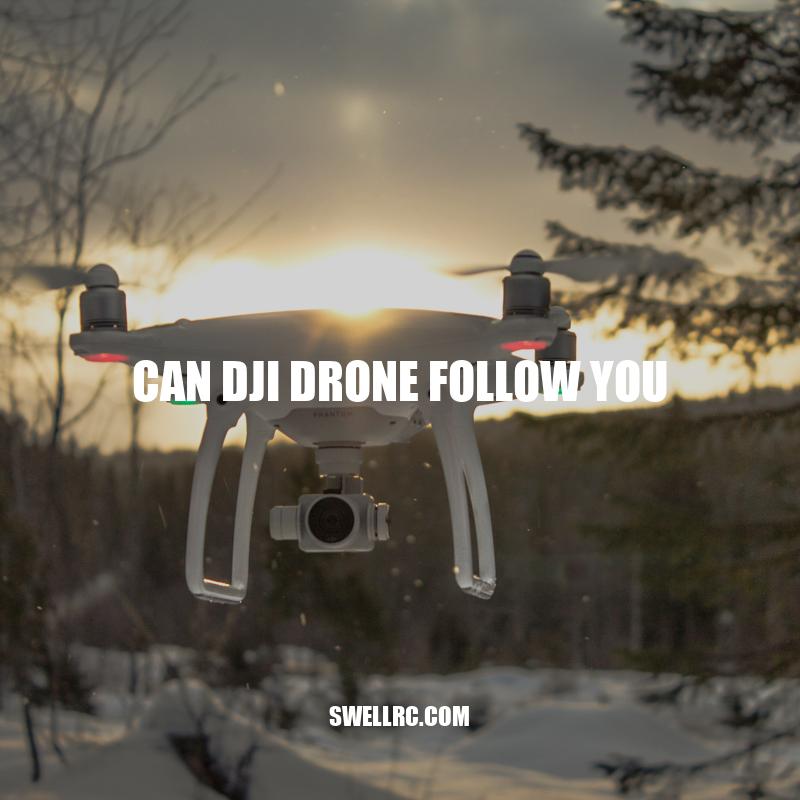Can DJI Drones Follow You? Exploring the Follow Me Feature
DJI drones have revolutionized the filmmaking industry, allowing amateur and professional filmmakers to capture stunning aerial footage. One of DJI’s most sought-after features is the “follow me” functionality that allows the drone to track and follow a subject automatically. As a result, aerial footage of running, biking, or skiing can now be captured easily and flawlessly. DJI’s follow me feature includes obstacle avoidance technology, ensuring that the drone remains at a safe distance from the subject while also avoiding any obstructions in the flight path. However, the technology also has its limitations, and it’s essential to understand them to ensure successful flights. In this article, we’ll take a closer look at DJI’s follow me feature, how it works, its benefits, limitations, and some tips for successful follow me flights. By the end of this article, you’ll have a better understanding of whether DJI drones can follow you, and if so, how best to utilize the feature to capture breathtaking aerial footage.
DJI Follow Me Feature
DJI’s follow me functionality is available on several of the company’s advanced drone models, including the Mavic 2 and Phantom 4 series. The feature works by using GPS and visual sensors to track the subject and maintain a safe distance while capturing footage. It includes obstacle avoidance technology, making it safe and reliable to use. Here are some of the key features of DJI’s follow me technology:
- GPS and visual sensors to track subject movement
- Obstacle avoidance technology to ensure safe flight
- Automatically maintains a safe distance from the subject
Overall, DJI’s follow me technology is state-of-the-art and provides a seamless way to capture dynamic aerial footage.
How does DJI Follow Me work?
DJI Follow Me is a feature that allows DJI drones to lock onto and follow a moving subject. Here’s how it works:
- The drone’s camera identifies the subject.
- The drone uses GPS and computer vision technology to track the subject.
- The drone calculates the subject’s speed and direction, and moves to keep up.
- The subject can be a person, car, boat, or any other moving object.
- DJI Follow Me can be activated through the DJI Go app or a remote control.
Note that DJI Follow Me is not available on all DJI drone models. For more information on which models have this feature, check the DJI website.
Obstacle Avoidance
Obstacle avoidance is an essential feature for successful follow me flights. DJI’s obstacle avoidance technology uses sensors to detect obstacles in the drone’s flight path and automatically fly around them, ensuring a safe and reliable flight. Here are some interesting facts about DJI’s obstacle avoidance technology:
| Feature | Description |
|---|---|
| Forward and backward obstacle sensing | The drone will detect and avoid obstacles in front and behind it, ensuring a safe flight path. |
| Side obstacle sensing | The drone will sense and fly around obstacles to the side, ensuring it doesn’t collide with anything. |
| Bottom obstacle sensing | The drone senses objects below it to avoid obstacles and ensure a safe landing. |
Overall, obstacle avoidance technology is essential for safe and reliable drone operation, especially when using follow me technology.
Learn more about DJI consumer drones equipped with obstacle avoidance technology on the DJI website.
How does DJI obstacle avoidance work?
DJI drones use obstacle sensors and advanced algorithms to detect obstacles and avoid collisions. Here’s how it works:
- The drone uses visual cameras and infrared sensors to detect the environment around it.
- Real-time data is processed using powerful algorithms, which help the drone to identify objects and calculate distances.
- If the drone detects an obstacle in its path, it will automatically slow down or stop to avoid a collision.
- The sensors have a range of up to 30 meters, which helps the drone to avoid obstacles far ahead of time.
If you’re interested in learning more about DJI’s obstacle avoidance technology, you can visit their website at www.dji.com.
Limitations of DJI Follow Me
While DJI’s follow me feature is impressive, there are some limitations to be aware of:
- Follow me requires good GPS reception, so it may not work well in remote or sparsely populated areas.
- It can be more challenging for the drone to track subjects in heavily wooded or obstructed areas.
- The maximum follow speed depends on the specific drone model.
- The drone’s battery life may limit the amount of time it can follow a subject.
- The follow me feature may not work well in winds or other inclement weather.
Despite these limitations, DJI’s follow me feature can still be an exciting and useful tool for capturing unique footage and providing interesting perspectives on your adventures. By being aware of the requirements and limitations of the feature, you can maximize your success and enjoyment with your DJI drone.
Can DJI drone follow you?
Yes, many DJI drones come equipped with Follow Me Mode, which allows the drone to follow and track a subject while in motion. The drone uses GPS technology to maintain a steady distance and altitude from the subject, while also avoiding obstacles. Some popular DJI drone models with this feature include:
- DJI Mavic Air 2
- DJI Phantom 4 Pro
- DJI Inspire 2
It’s important to note that while Follow Me Mode can be a useful tool for capturing action shots and creating dynamic videos, it’s crucial to use caution and follow all safety guidelines when operating a drone.
Tips for Successful Follow Me Flights
To increase your chances of a successful follow me flight, consider the following tips:
- Ensure that you’re in an open area with good GPS reception.
- Stay within the drone’s visual line of sight to monitor its flight.
- Use the obstacle avoidance feature to ensure flight safety and avoid collisions.
- Practice your flight path before attempting follow me to ensure the drone’s path is unobstructed.
- Use a follow me mode like ActiveTrack or Trace to adjust the distance between drone and subject and experiment with angles.
- Calibrate your drone’s compass to ensure reliable GPS tracking.
By following these tips, you’ll increase your chances of capturing amazing footage and having a successful follow me flight with your DJI drone.
Can I fly with my DJI drone?
Yes, you can fly your DJI drone for recreational purposes in most countries, but you need to comply with local regulations. Here are some key considerations:
- Verify and follow local drone regulations and laws by checking the website of the relevant authority.
- Register your drone if required, which can be done on the FAA website in the US, for example.
- Make sure to fly in areas where it is permitted and avoid restricted airspace.
- Ensure that your drone is in good condition, and fly it within your line of sight.
- Respect other people and their property, and do not fly over crowds, vehicles, or buildings.
For more information, you can visit the DJI website, where you can find a list of regulations by country and helpful tips for safe and responsible drone flying.
Conclusion
The follow me feature of DJI drones is a fantastic and reliable way to capture footage of yourself or other subjects. With obstacle avoidance technology and reliable GPS tracking, it’s easy to get stunning aerial images and videos without worrying about the drone crashing. However, as with any technology, it’s essential to follow safety guidelines and best practices to ensure a successful flight.
By understanding the limitations of the feature and following the tips outlined in this article, you’ll be able to make the most of your DJI drone’s follow me function. Whether you’re hiking in the mountains, skiing down a slope, or simply exploring a new city, the follow me feature can help you capture breathtaking footage that you’ll cherish for years to come.



